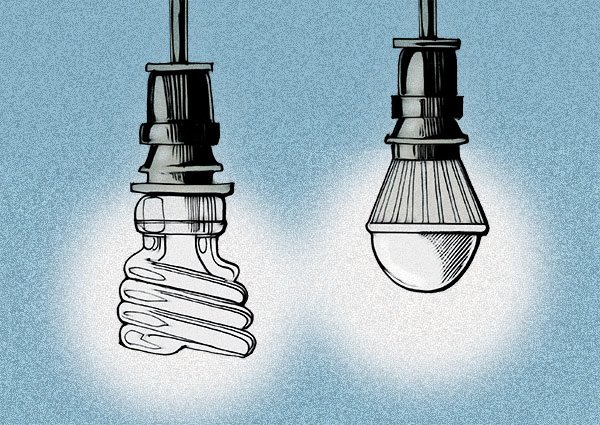Through the years, I have become more and more frugal and am always looking for ways to pinch pennies. I am familiar with the more commonly known ways of saving energy inside my home, such as adjusting the heat and air-conditioning thermostat when we are away. I am wondering if there are other ways to save, specifically with my interior lighting, that I might be overlooking.
Indoor lighting accounts for 15 percent of the average home's electrical use, according to the U.S. Department of Energy. The federal agency notes on its website (energy.gov) that reducing the energy used for such lighting is one of the most effective and easiest ways to lower utility bills.
"We have several energy efficiency programs running and one is all about light bulbs," says David Lewis of Little Rock, a spokesman with the utility company Entergy Arkansas.
"Basically, we subsidize what some retailers pay for certain energy-efficient bulbs, and the retailers then sell them at a significant discount," he explains. "For instance, you can get a newest-technology $26 Phillips LED [light-emitting diode] bulb at Home Depot for $18." Similar deals on LEDs and less-expensive CFLs (compact fluorescent lights) and some fixtures are at Lowe's, Wal-Mart, Target, Staples, Ace Hardware, Sam's Club, Kroger, Fred's and other retailers, Lewis says, that shoppers should also look for an Entergy logo. More information about the Entergy program is available at tinyurl.com/k8usckw.
It's helpful to familiarize yourself with the new lighting lingo. Light is no longer measured only by wattage. In today's lighting market, the key focus is on lumens, which measure a bulb's light output.
The Federal Trade Commission requires most lighting products to display a lighting facts label that includes the bulb's brightness in lumens. For those still struggling with the transition, many energy-efficient lighting packages also include "wattage equivalent" information to help find the right lumen level compared to the traditional measure of 40-, 60- or 100-watt bulbs.
The U.S. Department of Energy suggests these tips for reducing the cost of lighting a home:
• Turn off lights. This one may seem obvious but lots of residents forget to do this. Encourage every member of the household to turn off lights when leaving a room.
• Switch to energy-efficient bulbs. Replace inefficient incandescent lamps with high-efficiency CFL or LED bulbs. These newer technologies use about 75 percent less energy than conventional bulbs and last longer. Buy products with the Energy Star label to ensure quality and performance.
• Make use of natural light. It's free and there's plenty of sunlight available during the day. Turn off lights and open curtains, blinds and shades to let the sun light and warm a home.
• Use only what's needed. Install dimmer switches and three-way lamps to reduce energy use by controlling the amount of light. Occupancy sensors, which turn on the lights when they detect motion, can control lighting in rarely used areas such as storage rooms and garages.
• Instead of lighting an entire room, use task lighting to focus low-power light where you need it. A portable lamp for the home's office or a light installed under a kitchen cabinet can help save energy.
-- Linda S. Haymes
Do you have a decorating or remodeling question? We'll get you an answer from an authority. Send your question to Linda S. Haymes, Arkansas Democrat-Gazette, P.O. Box 2221, Little Rock, Ark. 72203 or email:
HomeStyle on 03/14/2015

